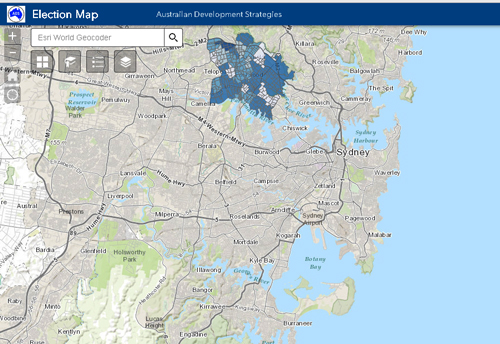
Aspirational Left voters rise again in NSW State Election
Category:NSW Election 2023Above is a snip of our ADS/Esri online map showing in shades of red the larger estimated Two Party Preferred swings to Labor in the March 25 NSW election at the close of counting on election night.
🔗https://arcg.is/0rqGez
My preliminary analysis of the March 25 NSW State election vote and swings appears in today’s Australian Financial Review for subscribers only at
🔗https://www.afr.com/politics/albanese-s-aspirational-left-piggybacks-nsw-labor-to-close-win-20230322-p5cugu
The analysis shows that the strongest swings to the ALP occurred in seats dominated by the better-paid Aspirational Left voters who also elected the Albanese Government and drove up private health insurance and private school enrolments during Covid lockdowns.
🔗 https://www.educationgeographics.net.au/new-face-of-politics/
Below is a chart from the preliminary analysis of the NSW results, showing the family income profiles of the seats you can see in the online map. Basically, the more high-income families in a state seat, shown to the right of the chart below, the bigger the 2PP swing to the ALP and the darker the red on the map, while more low to medium income families meant a smaller swing to Labor (below seven percent), or even a swing to Coalition, shown by darker shades of blue.
I should stress that only about half of the votes were counted on Saturday night, so the final results could vary to a sufficient degree to impact the results in a number of close seats.
I should also point out that that profile of both major parties in Australian politics are fading and, as they do, it’s becoming increasingly difficult to ascribe even a theoretical 2PP vote to the major parties in a quarter of the seats.
Big components of the Aspirational Left include Professional Women and Asian Migrants. Professional women are now the fastest growing occupational group among Australian workers and Migrants now make up more than 50 percent of Australian Population increases since 2001.
These groups are therefore likely to increase in numbers and influence in Australia in the coming decade and exert a strong and growing influence over future state and federal elections and the uptake of private education and private health insurance.
At ADS/EGS and HGS we will be including this new group in all our future modelling.








